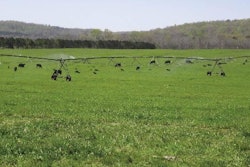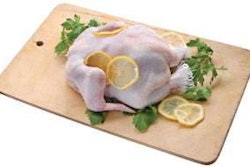Who can see all the way to 2015? Well, nobody. But the just-released USDA Agricultural Baselines Projections to 2015 contains long-run projections covering supply, demand, prices and other economic variables for major U.S. crop and livestock sectors, including poultry. Even for the non-economists among us, the report is worth a look.
One learns, for example, that USDA projects larger increases in poultry output that result in poultry becoming a larger proportion of total U.S. meat consumption. Overall, annual per capita consumption of red meats and poultry grows from 220 pounds in 2005 to 231 pounds in 2015. Poultry consumption rises from 103.0 pounds in 2005 to 115 pounds in 2015. Broiler consumption is the principal driver of the increase, climbing from 85.3 to 96.8 pounds, while turkey edges up from 16.4 to 16.8 pounds. Beef consumption, on the other hand, drops from 65.9 to 64.8 pounds, while pork is almost unchanged, rising just 0.2 pound to 49.9 pounds.
Keep in mind that the projections are not a forecast but a conditional scenario based on specific assumptions regarding the macro-economy, agricultural economy, the weather and international developments. Think of the baseline as a neutral backdrop or reference scenario that provides a point of departure for analyzing alternative farm sector outcomes that could result under different domestic or international assumptions. USDA’s assumptions, therefore, are as crucial as the baseline projections, themselves. Following are some of the key assumptions behind USDA’s projections:
• World economic growth is projected to increase at a 3.2-percent average annual rate between 2006 and 2015, after averaging 3 percent between 2001 and 2005. Strong economic growth in developing countries of about 5 percent annually is projected for 2006-15.
• Growth in global population is assumed to continue to slow to an average of about 1.1 percent per year over the coming decade. Because the population growth rates in developing countries remain above those in the rest of the world, developing countries’ share of world population increases to over 81 percent by 2015, up from about 80 percent in 2005.
• The U.S. dollar is assumed to appreciate slowly in real terms, remaining relatively high by historical standards.
• Real oil prices are projected to fall from 2007 to 2010. In subsequent years, crude oil prices are projected to rise, but only slightly faster than the general inflation rate.
• The baseline assumes that the 7.5 billion gallons renewable fuel use mandated by federal law will be significantly exceeded through 2010, before stabilizing at levels closer to those mandated. Initially, the production of ethanol is assumed to be principally from corn.
• Baseline trade projections assume that countries comply with existing bilateral and multilateral agreements affecting agriculture and trade. Economic and trade reforms under way in many developing countries are assumed to continue.
• Avian influenza is assumed to not significantly affect overall consumer demand for poultry.
Based on all this and more, USDA analysts conclude, “With rising grain prices, due largely to expansion of corn-based ethanol production, returns to U.S. red meat production are generally lower than in recent years, slowing beef and pork production gains, particularly in 2010-15. Larger increases in poultry output result in poultry becoming a larger proportion of total meat consumption.”
USDA Agricultural Baselines Projections to 2015 is available at www.ers.usda.gov/Briefing/Baseline. The next baseline projections are scheduled for release in February 2007.

















